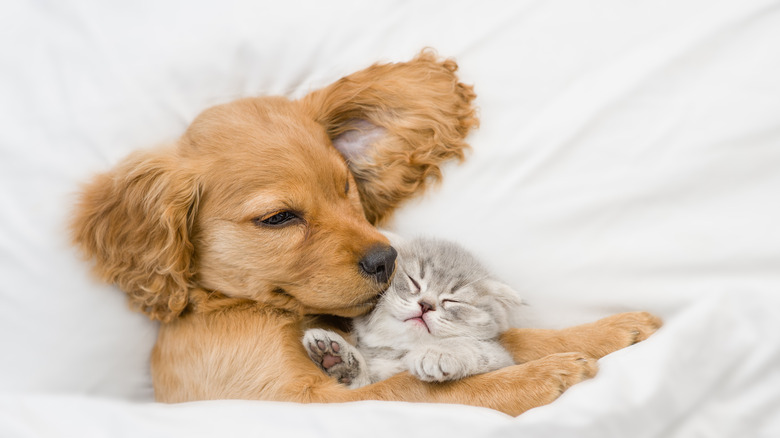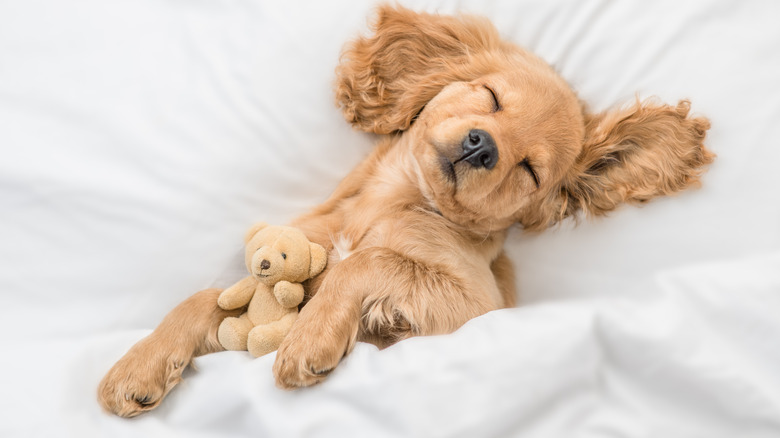Do Pets Have Dreams When They Sleep?
There's nothing cuter than a sleeping puppy or kitten. They zonk out at all hours of the day in sometimes crazy positions. And if you're lucky, you'll catch them with their paws and ears twitching and even making muffled noises while they are in a deep rest. But do these adorable noises and movements indicate that your pet is dreaming?
In order to understand dreams, let's go over what we know about our brain wave patterns while we sleep. Sleep is a physical state of rest that occurs in both humans and animals where consciousness, sensory activity, and muscle activity become inhibited, according to News Medical. According to VCA Animal Hospitals, all mammals (both humans and pets) experience two primary stages of the sleep cycle. The first is SWS (slow wave sleep), where the brain waves move slowly, there is low eye movement, and the muscles are still moderately toned. A pet in this stage is sleeping with their eyes closed but can be easily woken up. The second stage of sleep is called REM sleep, which is a deeper state characterized by rapid eye movements, relaxed muscles, and highly active brain waves. This is when you'll see your dog's eyes flutter, their legs moving, and some whining or grumbling, confirms VCA Animal Hospital.
Since the brain wave activity of mammals matches humans during REM sleep, we can concur that our pets do, in fact, dream. But what else do we know about our furry friends while they slumber?
What we know about our pet's dreams
Since we've determined that dreaming is a normal part of the sleep cycle for both humans and pets, what else do we know about our little friend's dreams? Since we can't ask them what was going through their heads last night, we can only hypothesize that they dream about their daily lives, just like humans do, according to Live Science. That's right. Since you are the center of their universe, that likely means you were included, along with chasing squirrels, eating, and going on walks.
Dogs enter REM sleep after about 20 minutes into their sleep session, and dreaming begins shortly thereafter, Stanley Coren, the author of "Do Dogs Dream? Nearly Everything Your Dog Wants You to Know," tells Live Science. You may notice that your puppy or senior dog has more muscle movement than a middle-aged dog. Interestingly, Coren points out that this occurs because an area of the brain stem called the pons, which usually paralyzes the large muscle groups during sleep, is underdeveloped in puppies and weakened in older adults.
Many wonder if you should wake up your pet if they are having a nightmare or vivid dream. The answer is no, because just like humans, a deep state of rest is vital to our health, so it's important to let your pet continue sleeping. Most likely, they aren't having a nightmare either, and their sleep activity is nothing to be alarmed about.

